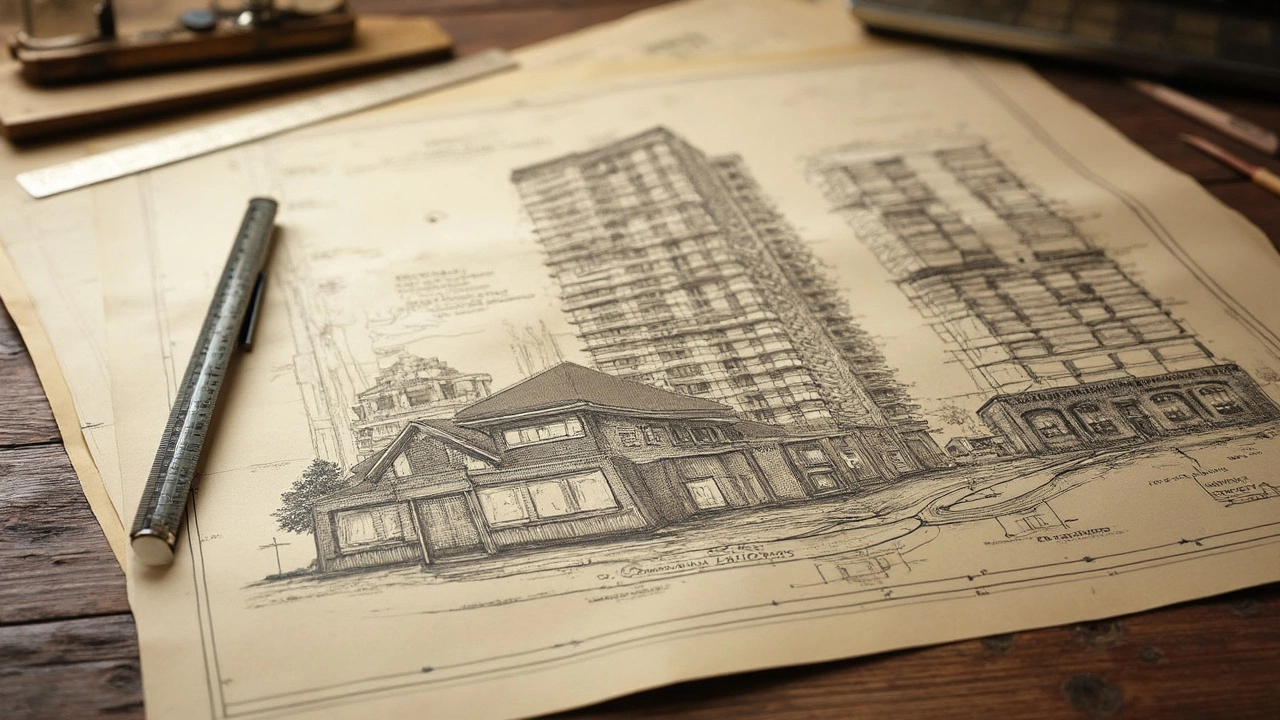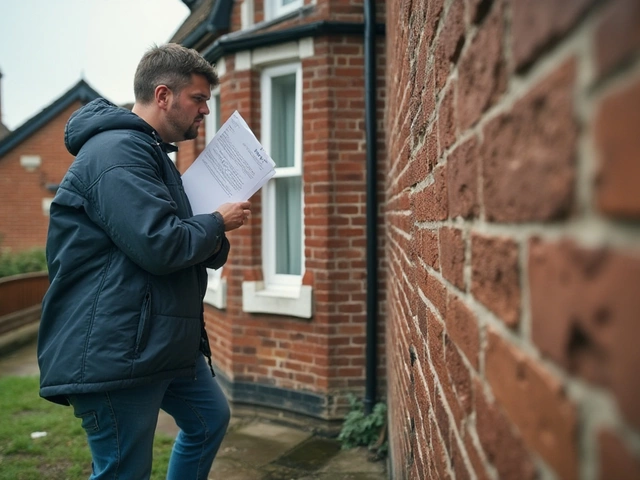
Ever wonder what sets commercial construction apart from non-commercial? It's more than just building styles or locations. Commercial projects are all about spaces where business is king. Think shopping malls, skyscrapers, or even your favorite coffee shop down the street. These structures host transactions and services, making them a crucial part of the economy.
Non-commercial construction, on the other hand, focuses on spaces that serve other purposes. It could be homes, community centers, or schools. These buildings cater to everyday living and community needs. Understanding the difference is vital, especially if you're considering diving into a construction project yourself.
- Defining Commercial Construction
- What about Non-Commercial?
- Interesting Facts and Figures
- Key Differences in Regulations
- Practical Tips for Construction Projects
Defining Commercial Construction
So, what actually is commercial construction? At its core, it's all about creating places where business happens. This means any project typically aimed at generating profit or housing commercial activities. Think about it as the backdrop of our economic activities—whether you're catching a movie or visiting a tech startup, commercial construction made those places possible.
The Scope of Commercial Construction
Commercial construction encompasses a wide range of buildings. Let's break it down:
- Retail Spaces: This includes shopping centers, malls, and individual stores. The focus is on consumer experience and traffic flow.
- Office Buildings: From towering skyscrapers in cities to smaller office complexes, these are designed for various business operations.
- Warehouses and Industrial Buildings: Meant for storage and manufacturing, these structures prioritize efficiency and logistics.
- Medical Facilities: Hospitals, clinics, and laboratories fall under this, emphasizing safety and specialized infrastructure.
Interesting Stats about Commercial Construction
Here's something interesting. Did you know that the global commercial building construction market was projected to hit around $5 trillion by 2024? Yeah, it’s a major chunk of business world. More importantly, job creation in this sector is robust, offering careers in areas from design to the actual building process.
Regulations and Compliance
A big part of commercial construction involves navigating regulations. Building codes, zoning laws, and permits play crucial roles. It's not just about throwing up walls. Compliance ensures safety, accessibility, and sustainability in the building process.
In the end, whether you’re a contractor or a curious enthusiast, understanding these basics gives you a solid foundation for grasping the essence of commercial construction. When you walk into that busy shopping mall or set foot in your favorite office building, you now know the science and art that went into getting those doors open.
What about Non-Commercial?
When we talk about non-commercial construction, we're diving into the projects that aren't driven by business profits but are about improving lives and communities. Think residential houses, schools, and public hospitals. These buildings are often essential for a community's well-being, serving as the backbone for daily activities and social services.
Key Features of Non-Commercial Construction
Non-commercial construction projects frequently cater to the public or private use of individuals rather than financial gain. For instance, a community library serves as a knowledge hub without worrying about generating profit. These kinds of projects are funded by governments, non-profits, or individuals and play a massive part in societal development.
Common Types of Non-Commercial Projects
- Residential Homes: Perhaps the most common, these include everything from single-family homes to apartment complexes.
- Schools: Buildings that provide education facilities, which are crucial to community growth.
- Public Amenities: Parks, playgrounds, and recreational centers that serve public utilities and leisure needs.
- Healthcare Facilities: Public hospitals and clinics offering essential health services.
Non-commercial construction projects might have smaller budgets compared to commercial construction, but they are critical to community well-being. Designing and building these spaces often involve specific standards to ensure safety and accessibility, differing from the flashy requirements more common in commercial developments.
| Type | Estimated Cost (per sq ft) | Completion Time |
|---|---|---|
| Single-Family Home | $150 | 6-12 months |
| School Building | $225 | 12-24 months |
| Small Public Library | $200 | 9-18 months |
Local regulations can heavily influence these projects. For example, zoning laws determine where schools or hospitals can be constructed, ensuring they serve the community efficiently. So, if you're planning a non-commercial construction project, knowing these rules is crucial. After all, these aren't just physical buildings but spaces that hold communities together.

Interesting Facts and Figures
Diving into the world of commercial construction can feel like exploring a different universe, especially when you learn about the sheer scale and impact these projects have. Did you know that the global construction industry was valued at a whopping $10.3 trillion in 2023? It's a massive sector, with commercial projects making up a huge slice of that pie.
Significant Scale
One jaw-dropping fact is the Burj Khalifa in Dubai, the tallest commercial building in the world, stands at 2,717 feet tall. It took six years to complete and involved 12,000 workers on-site daily. That's like building an entire city vertically!
Economic Impact
According to a report by the International Construction Market Survey, the USA leads with some of the most expensive commercial construction projects, costing an average of $4,500 per square meter in cities like San Francisco and New York.
“A robust commercial construction industry is vital for economic growth, providing jobs and enhancing infrastructural development,” says Michael W. Treacy, a renowned economist known for his studies on economic impact in construction industries.
Environmental Considerations
One major shift recently is the trend towards green buildings in commercial construction. As of 2023, 47% of companies were incorporating sustainable practices. This includes using eco-friendly materials and technology to lower carbon footprints.
Let's take a peek at these eye-catching stats:
| Year | Construction Value ($ Trillion) | Green Building Adoption (%) |
|---|---|---|
| 2021 | 9.2 | 39 |
| 2023 | 10.3 | 47 |
As the commercial construction landscape continues to evolve, staying informed about these trends and numbers not only helps in understanding its current state but also in predicting where it's headed next.
Key Differences in Regulations
When it comes to construction, the regulations for commercial construction and non-commercial projects aren't just different—they're in a whole different league. Commercial buildings, because they serve the public, have to meet some hefty requirements. You know, stuff like accessibility, safety, and fire codes.
For starters, building codes for commercial projects are typically stricter. The International Building Code (IBC) sets the standard for many of these, especially in the US. Under IBC, sprinklers, specific fire resistance in materials, and emergency exits are way more crucial for commercial spaces. Non-commercial buildings like homes may not need such comprehensive systems.
Zoning Laws
Zoning is another biggie that separates the two. Commercial projects usually face tougher scrutiny because they often affect the surrounding area more. Is it gonna be an office building or a store? Where's it located? These questions matter a lot.
In contrast, residential zoning is more about ensuring the area stays suitable for family life. This means focusing on things like the number of homes in a lot.
Environmental and Safety Regulations
With commercial projects, there's a whole stack of environmental laws to look at. Environmental Impact Assessments (EIAs) are common for large projects to gauge how they will affect the environment. Non-commercial builders often deal with less red tape here unless they’re building near protected land.
When we talk about safety, it’s another layer. Commercial sites require safety protocols, geared not just to protect workers but customers, too. Training, hazard assessments, and compliance checks happen often.
Understanding these regulatory differences is key for anyone navigating the construction scene, ensuring projects get off the ground—literally and figuratively—without a hitch.

Practical Tips for Construction Projects
Diving into a construction project can feel like a massive puzzle at first. But once you know a few tricks, it all gets much smoother. Let's walk through some handy tips whether you're tackling commercial construction or venturing into non-commercial areas.
Start with a Clear Plan
Before anything else, you need a game plan. Reach out to architects and engineers who can sketch out the technical details. For commercial construction, prioritize identifying the purpose early on. Knowing if it's a retail space or office helps guide the design process.
Budget Wisely
This one's a no-brainer but often overlooked. Make sure you've outlined costs and set aside a contingency fund—it covers those unexpected expenses that always crop up. Study past projects similar to yours to get realistic estimates.
Focus on Local Regulations
Rules can vary a lot depending on the location. Consult the local city or county offices about zoning laws and permits. For commercial construction, these regulations can affect everything from building height to parking space requirements.
- Check if you need special permits for your type of building.
- Be aware of environmental impact assessments for larger projects.
Choose the Right Materials
Don't skimp on materials. Though cheaper options might seem appealing, investing in quality pays off in durability and safety. For non-commercial projects, consider sustainable materials to reduce environmental impact.
Communicate Effectively
Keeping an open line of communication with your team is clutch. Ensure everyone’s on the same page, from contractors to suppliers. It minimizes costly errors and streamlines the process.
Construction projects often stress detailed planning and communication, but with these pointers, you’ll tackle them head-on with confidence!
| Average Cost Estimates | Per Square Foot |
|---|---|
| Commercial | $175 - $250 |
| Non-Commercial | $100 - $200 |




